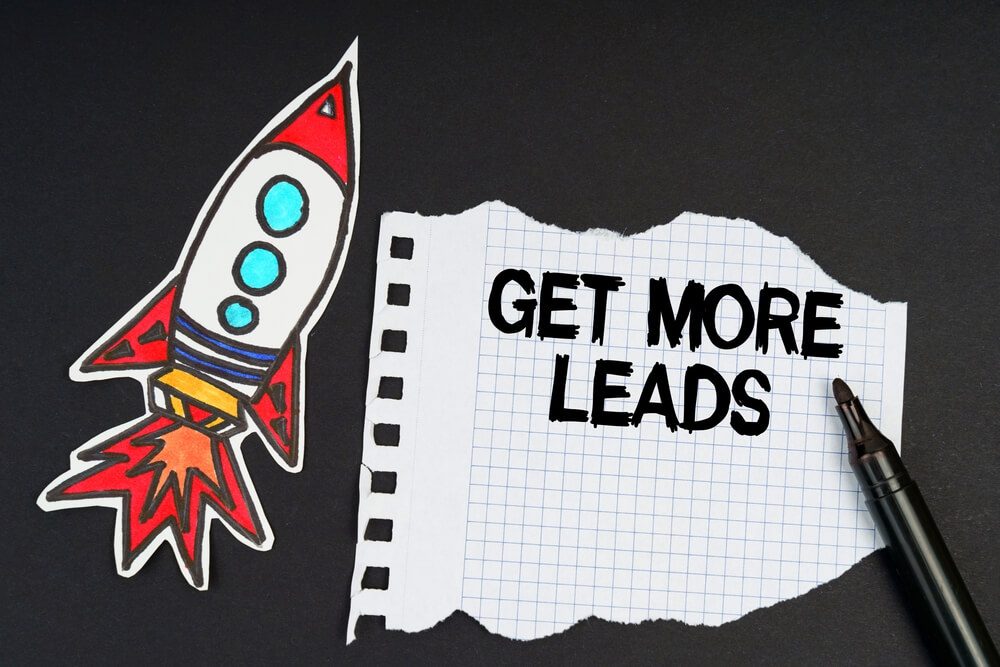
5 Easy Tips for Getting Started With Lead Generation
How do businesses create interest in their products or services? How do they convert ordinary visits or inquiries into customers? The answer is lead generation.
It is a business process that combines sales and digital marketing to attract audiences. These strategies gently lead people into the buyer’s journey until they become full-fledged customers.
Find out how to start with lead generation using these top five tips:
 Before diving into the process, first determine whether you need lead generation or demand generation. The former involves identifying, getting, and nurturing people who have shown high interest in your product or service in order to convert them into customers. Once they become customers, lead generation shifts focus to retaining them as brand advocates.
Demand generation, on the other hand, is a digital marketing method with a goal of raising awareness and interest in a brand.
Next, you need to know what a lead is as well as the various types of leads. Learning these helps provide the proper support and the best experiences for every stage of the buyer’s journey. Leads can be cold, warm, or hot. Let us find out why.
Before diving into the process, first determine whether you need lead generation or demand generation. The former involves identifying, getting, and nurturing people who have shown high interest in your product or service in order to convert them into customers. Once they become customers, lead generation shifts focus to retaining them as brand advocates.
Demand generation, on the other hand, is a digital marketing method with a goal of raising awareness and interest in a brand.
Next, you need to know what a lead is as well as the various types of leads. Learning these helps provide the proper support and the best experiences for every stage of the buyer’s journey. Leads can be cold, warm, or hot. Let us find out why.
 A company’s business objectives state its plans for the near future (a quarter, half a year, or a year from now). With clear goals, businesses can measure their success and develop strategies as appropriate. They can optimize their sales and marketing strategies, increase conversions, and boost revenue.
Create clear objectives for lead generation success. The following are common objectives to guide your campaigns:
A company’s business objectives state its plans for the near future (a quarter, half a year, or a year from now). With clear goals, businesses can measure their success and develop strategies as appropriate. They can optimize their sales and marketing strategies, increase conversions, and boost revenue.
Create clear objectives for lead generation success. The following are common objectives to guide your campaigns:
 Start creating a lead generation campaign after setting the objectives and defining the ideal audience. An effective campaign includes the content or offer, the campaign budget, measuring outcomes, and a lead nurturing plan. Here are steps and best practices to create a lead generation campaign:
Start creating a lead generation campaign after setting the objectives and defining the ideal audience. An effective campaign includes the content or offer, the campaign budget, measuring outcomes, and a lead nurturing plan. Here are steps and best practices to create a lead generation campaign:
- Understand the different types of leads.
- Differentiate leads from prospects and sales opportunities.
- Define your business objectives.
- Develop an ideal customer profile.
- Create a lead generation campaign.
1. Understand the Different Types of Leads
 Before diving into the process, first determine whether you need lead generation or demand generation. The former involves identifying, getting, and nurturing people who have shown high interest in your product or service in order to convert them into customers. Once they become customers, lead generation shifts focus to retaining them as brand advocates.
Demand generation, on the other hand, is a digital marketing method with a goal of raising awareness and interest in a brand.
Next, you need to know what a lead is as well as the various types of leads. Learning these helps provide the proper support and the best experiences for every stage of the buyer’s journey. Leads can be cold, warm, or hot. Let us find out why.
Before diving into the process, first determine whether you need lead generation or demand generation. The former involves identifying, getting, and nurturing people who have shown high interest in your product or service in order to convert them into customers. Once they become customers, lead generation shifts focus to retaining them as brand advocates.
Demand generation, on the other hand, is a digital marketing method with a goal of raising awareness and interest in a brand.
Next, you need to know what a lead is as well as the various types of leads. Learning these helps provide the proper support and the best experiences for every stage of the buyer’s journey. Leads can be cold, warm, or hot. Let us find out why.
- Cold leads are people who have not yet shown interest in the business’s products or services. However, they fit the company’s ideal customer profile. Their demographics—education, gender, ethnicity, income, and religion—match. Their interests, lifestyle, opinions, values, and beliefs might also align.
- Warm leads are people familiar with the company’s brand, products, or services. They interact with their content, blogs, or social media posts but have not purchased yet.
- Hot leads have reached out to the business about their products or services. They have booked a demo or signed up for a free trial. Companies must respond quickly to hot leads as they are very likely to make a purchase.
2. Differentiate Leads from Prospects and Sales Opportunities
Aside from understanding the different types of leads, businesses have to also learn how to differentiate between similar terms such as “leads,” “prospects,” and “sales opportunities.” These terms are used interchangeably, but distinctions are helpful for understanding lead generation.- A lead is a person who is interested in a company’s products, services, and brand but has not yet qualified as a good fit for purchase. For example, someone clicks on an ad on social media about an affordable condominium development. The person is a lead, but once they qualify for the offer, they become a prospect.
- A prospect is a lead that fits your customer profile and, thus, qualifies to make a purchase.
- A sales opportunity can be a lead or prospect but in either case is ready to buy or place an order.
3. Define Your Business Objectives
 A company’s business objectives state its plans for the near future (a quarter, half a year, or a year from now). With clear goals, businesses can measure their success and develop strategies as appropriate. They can optimize their sales and marketing strategies, increase conversions, and boost revenue.
Create clear objectives for lead generation success. The following are common objectives to guide your campaigns:
A company’s business objectives state its plans for the near future (a quarter, half a year, or a year from now). With clear goals, businesses can measure their success and develop strategies as appropriate. They can optimize their sales and marketing strategies, increase conversions, and boost revenue.
Create clear objectives for lead generation success. The following are common objectives to guide your campaigns:
- Generate an exact number of leads.
- Improve revenue per lead.
- Increase the number of subscribers or registrants.
- Increase conversion rates.
- Boost sales.
4. Develop an Ideal Customer Profile
After defining their objectives for lead generation, businesses have to get to know their ideal customers. By creating a perfect customer profile, they should focus their resources on people who are likely to purchase. Similar to search engine optimization (SEO), companies must identify people who might become loyal customers as well as those who might recommend their brand. By developing customer profiles, they can successfully optimize their marketing efforts and budgets. These are the steps in building the ideal customer profile:- Identify at least five of your best customers. These are pleasant customers that are easy to work with and provide the most profit or revenue.
- Select at least five of the worst customers. These are customers that are challenging to work with and provide the least profit or revenue.
- Create profiles for these customers. For B2B lead generation, consider factors such as annual revenue, the number of employees, positions and roles, business situations, factors affecting the company, and psychographics.
- Identify trigger events that led these prospects into your database. These events could include buying processes, ownership, financing, strategies, and legislation.
- Consider what these customers have in common.
5. Create a Lead Generation Campaign
 Start creating a lead generation campaign after setting the objectives and defining the ideal audience. An effective campaign includes the content or offer, the campaign budget, measuring outcomes, and a lead nurturing plan. Here are steps and best practices to create a lead generation campaign:
Start creating a lead generation campaign after setting the objectives and defining the ideal audience. An effective campaign includes the content or offer, the campaign budget, measuring outcomes, and a lead nurturing plan. Here are steps and best practices to create a lead generation campaign:
- Develop a lead magnet. This can be a discount code, white paper, ebook template, webinar, or another resource. Prospects must provide their information (name, email address, and company information) to gain access to these offers.
- Set the lead capture method. It can be a print ad, a live event, or a landing page where you can highlight the offer.
- Prepare customer relationship management (CRM) software to help organize and study data.
- Create lead nurturing steps to guide prospects into making a purchase.
- Drive traffic to lead magnets. Strategies include exit-intent pop-ups, website banners, social media, email signatures, paid ads, guest posts, podcasts, and word-of-mouth.
- Analyze results and improve. Measure lead generation outcomes by reviewing closed deals and new marketing-qualified leads and identifying optimization opportunities.
- Automate data collection to allow tracking of multiple metrics. Include the following: overall traffic and revenue, conversion rates, partial form fills, completed forms, cost-per-click, click-through rates, cost-per-acquisition, and average customer lifetime value.
- Use expert SEO strategies to produce successful lead generation campaigns such as keyword optimization, quality content, on-page SEO, local SEO and link building techniques.
Summing Up
These five easy techniques can help businesses get started with lead generation. This marketing strategy requires careful planning, research, and analysis to create quality leads. By partnering with a trusted lead generation company, you can get reliable and valuable results in a relatively short time. Find out how the experts do it. Contact Digital Authority Partners (DAP) for the latest in lead generation strategies today.Want To Meet Our Expert Team?
Book a meeting directly here



